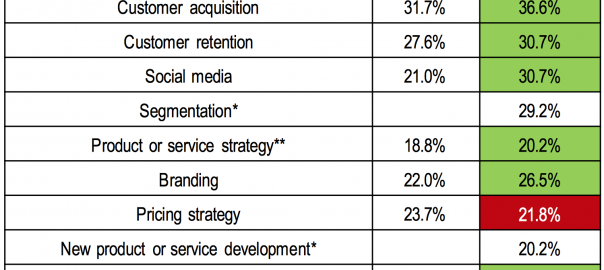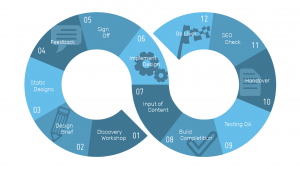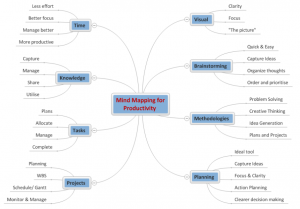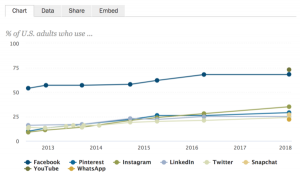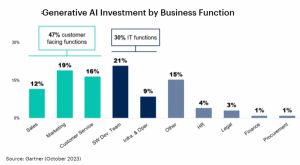
Over a billion dollars of VC funding has been spent on marketing analytics so far this year.
With this growth, and the ever increasing portfolio of marketing analytics providers available today, comes a fresh challenge.
It’s now largely the job of the CMO rather than the CIO to prove the return of investing in this category – and the user adoption and investment data clearly shows that marketing analytics is a hot category showing no signs of slowing.
A recent VentureBeat study highlighted just how fragmented the analytics market is.
Roughly a third of marketing budget is being spent on marketing analytics, with brands planning to increase their spend by 74% over the next three years. Despite this, marketing analytics usage is surprisingly limited.
The author of the report, VB Insight’s Jon Cifuentes, says “Algorithmic attribution, mix modeling, and other advanced methods are actually pretty rare in market.”

With the increasing pressure to prove ROI in every area, today’s CMO needs to be armed with the knowledge that they are able to quantify their spend, and then actually use the data insightfully.
So, what’s the problem?
Marketing analytics: increasing profits
Measurement is seemingly always a sticking point for businesses.
With the continual advancement in measurement solutions, it is becoming more simple to track traditional, direct response marketing results.
But what about the marketing analytics technologies themselves?

A new study by consulting experts McKinsey has answered questions on what they call “analytics effectiveness” – do marketing analytics improve profits or ROI? And are companies using marketing analytics effectively?
The consultants at McKinsey created a metric reflecting the number of ways companies use marketing analytics, from customer acquisition to omnichannel marketing.
“Our results show that a one-unit change in the use of marketing analytics (i.e., the application of marketing analytics to one more area) yields a 0.39% increase in profits.
This means that using three “units” of marketing analytics improves profits by over 1%. For marketing ROI, the figure is 0.61%. This use metric has a positive and significant effect on both outcomes even after controlling for marketing analytics spending, product vs. service, and B2C vs. B2B.” – McKinsey
This new approach to measurement answers some of the top-level questions being launched at marketers, and provides an incredible vote of confidence for those holding the budget for 2016.
By being able to attribute an improvement in profits of nearly half a percent for each ‘unit’ of activity, a seemingly murky area for the CMO appears to have been thrown into the light, finally.
The wide-spread use of marketing analytics across the business can yield significant profit.
Activating over generating
Despite this great news for those struggling to quantify the impact of marketing analytics, a new challenge arises: actually being able to activate the insights that these technologies offer.
The CMO Survey shows us where companies are using marketing analytics, as seen below, and, although growing fairly rapidly, it’s still relatively slim pickings.

Their report has proven the benefits of using such technologies, so why aren’t organizations embedding them more widely across the business?
The problems appear to arise in that companies aren’t investing enough time and energy in ensuring these insights are being used effectively.
Only 10% of those surveyed believe they are effective at feeding back the insights available to the wider business.
“We have found that companies that invest time and energy focusing on activating insights rather than just generating them have the greatest success.
Doing this effectively requires working with decision makers – whether that’s in the C-suite or on the front lines – to identify what insights are necessary so that analysis can be better focused. It also means delivering insights in a way that’s easy to use (i.e., simple language, intuitive graphics, and speedy delivery).” – McKinsey
Companies using marketing analytics should consider how they are activating these insights.
How will other teams best consume them? Through reports? Is data sent as a spreadsheet, without any follow-up? This is where hiring the right talent becomes imperative.
Creating an analytics culture
Organizing, structuring and managing a successful analytics team will give an organization more insight into its data than conventional reporting-based business intelligence can.
The potentially most successful, not to mention quickest, way to create an internal business culture that thrives on data analytics tech and fact-based decision making is to start at the top of an organization.
As well as ensuring that marketing analytics is front-of-mind for the C-suite and decision makers, embedding data across the enterprise using command centers can allow everyone in the business to see the results of these technologies.
Getting your insights in front of the right people, with the right action points, is key – this study clearly shows where companies are falling down in this area and missing a clear business opportunity.
Simply dumping a ton of data into an analytics team is not enough. Data needs to be accessible.
Analytics need to speak the language of sales, of marketing, of business services.
It seems like finally we’re getting there.
Digital & Social Articles on Business 2 Community(56)
Report Post